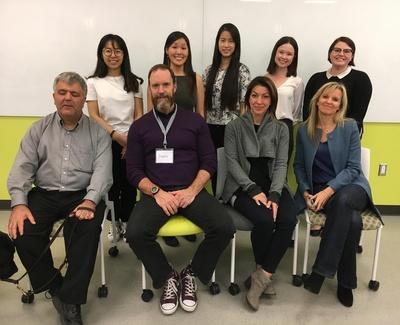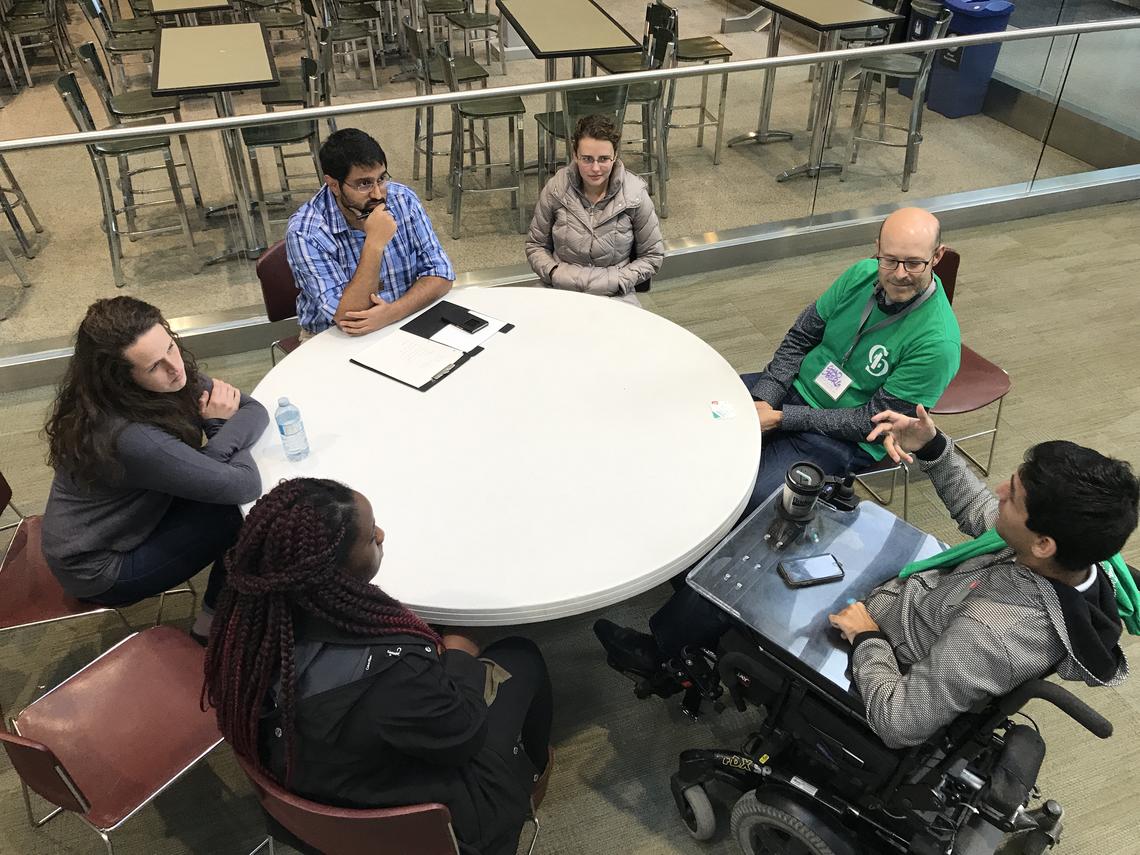
Members of the AccessABLE winning team
Nov. 27, 2017

Members of the AccessABLE winning team
Typically, students are ensconced within their respective faculties and programs. Possibly they will take electives that broaden their education. The Calgary Interprofessional Challenge (CIC) seeks to disrupt the norm by creating an environment for interdisciplinary learning and problem-solving. Over the last weekend of October, student and faculty representatives from nine faculties at the University of Calgary skipped the candy and costumes to collaborate to create solutions to accessibility challenges in Calgary.
The 2017 CIC was the second edition of the annual event, which this year expanded from six to nine participating faculties. Students came from the Schulich School of Engineering, the Cumming School of Medicine, the Haskayne School of Business, the Werklund School of Education and the faculties of Environmental Design, Law, Nursing, Science, and Social Work. Each team was comprised of a combination of students from each of these faculties in order to spur interdisciplinary thinking.
Angela Gallo-Dewar, director of academic and student services in the Faculty of Law, explained that the faculty was excited to extend the interprofessional experience to their students.
“Interprofessional collaboration is a great way to learn with and from people with different backgrounds and from other disciplines,” Gallo-Dewar said. “Once students graduate into the work world they will not be working in silos and having had interprofessional learning opportunities as a student will allow them to more quickly adapt and embrace a team approach.”
The main question of the challenge — how might we improve accessibility for people with mobility issues in Calgary? — pushed the teams of students to develop an idea and a business pitch to address this concern. In order to support their work, workshops were organized by the participating faculties and mentors of various professional backgrounds were on hand to consult with the teams.

Nabeel Ramji mentors a team on the second day of the Interprofessional Challenge.
Nishan Sharma, for the Cumming School of Medicine
Katie Ayer, who is in the second year of the law program at the University of Calgary, was part of the winning team, AccessABLE. Katie, along with her teammates Ai-Men Lau (Social Work), Anna Li (Engineering), Sharon Wang (Science), and Victoria Chang (Medicine), created an app for tracking the Access Calgary bus. At the moment, the Access bus provides a window of time for arrival that can vary by up to 45 minutes. The goal of the app is to cut down on wait times for users as well as to provide a more specific arrival time. The app would also include a map that shows the current location of the bus.
“My biggest takeaway from the challenge was learning to work with people from different disciplines, and being able to see how ideas can transform when explored through different perspectives,” Ayer said. “There was very little of our original idea left by the end of the competition, and we would never have reached our end result if we hadn't incorporated a little bit of everyone's background and experience into the project.”
Nabeel Ramji founded Accessibility for All Albertans, an initiative that focuses on raising awareness of accessibility issues among real estate developers, architects, and the public. Ramji lent professional and personal experience as a person living with cerebral palsy to CIC.
“Engaging with the students as a mentor was a fantastic experience because each team was interested in seeing if their research on common accessibility challenges matched my own lived experience of having a physical disability,” Ramji said. “In addition to this, each group wanted to see if their proposed idea would improve the lives of those that face accessibility barriers on a daily basis.”
Ramji was also impressed by the innovations teams developed, which went beyond the removal of physical barriers in the built environment to include the consideration of smart technology, physical products, and applications.
One team developed a pull-down folding seat that could be added to various locations throughout the city. They named their product implementation idea Have a Seat. As the moniker suggests, this product was developed to provide easy access to rest stations along popular walking routes.
Not only did CIC provide insight and innovation into the world of accessibility, it gave the students involved invaluable experience in designing and collaborating across disciplines, sharing viewpoints and integrating expertise to solve real-world problems. No doubt the consequent iterations will only continue to expand these interdisciplinary connections and opportunities.
To learn more about the CIC and how to get involved in future iterations, please contact cic@ucalgary.ca.
For those interested in learning more about accessibility challenges in Calgary, Nabeel Ramji recommends checking out Accessible Housing; Paralympics; CADS; Vecova; CNIB; March of Dimes Canada